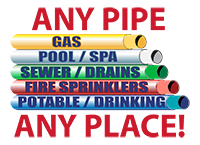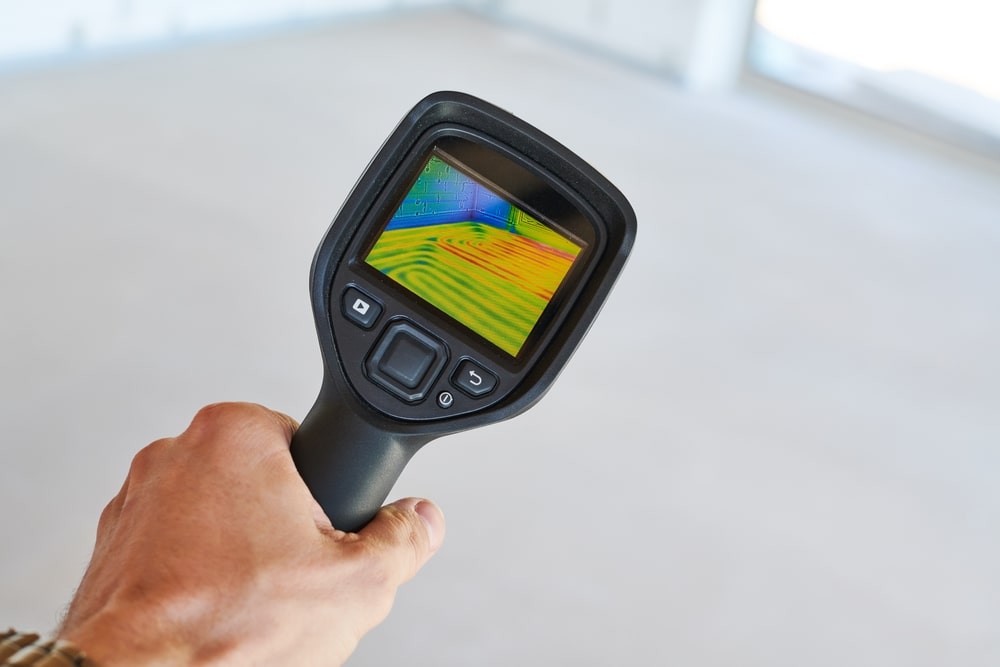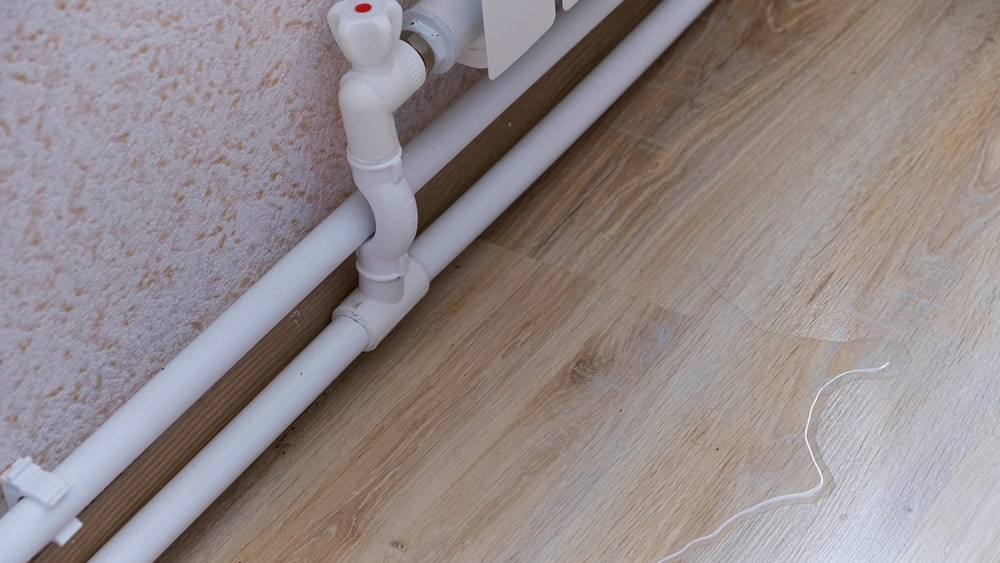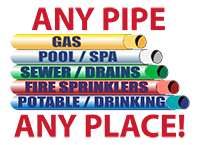Plumbing leaks are one of the major household expenses in the United States. If your plumbing systems are not working the way they are supposed to, you will end up spending a significant amount of money on plumbing expenses.
The average water damage insurance claim in the United States is $10,234, which is much more than what you would expect it to be. The only way to safeguard your home and plumbing systems is to put a leak detection system in place.
Today we will discuss everything that you need to know about leak detection systems. We will go over the following questions:
- How does leak detection work?
- What is leak detection?
- Why you should install a leak detection system
- Cost of installing leak detection system and where you should install it
- Types of leak detection systems
What is leak detection?
Leak detection is precisely what the term suggests. The function of leak detection systems is to monitor the plumbing system of a home and report any leaks. A leak detection system not only monitors leaks but also prevents spillages. It does so by cutting off the plumbing system whenever a leak is detected.
Leak detection systems work for even the smallest of leaks. Here are some of the minor cases of leaks that we often overlook:
- A jammed toilet flapper
- When a tub is left running for a long period of time
- A fitting ruptures behind a wall
Leak detection systems work across all the plumbing fixtures in a house. No matter how minor or severe the leak is, the detection system will alert you and cut the system off.
Leak detection systems offer one of the easiest ways to monitor the entire plumbing network of a home. The size of the property is not a restriction either. It works the same way for small and large houses.
You can also access historical leakage data with the help of a leak detection system. That will also help plumbers diagnose the problem and fix it. Some leak detection systems also monitor water usage. You can analyze how much water you are using (or misusing) with the help of this data.
Now let us go through some of the key reasons to install a leak detection system in your home.
Why you should install a leak detection system in your home
There are more than enough reasons to install a leak detection system in your home. Even if you look at it as an unnecessary investment, the benefits are well worth it. Let’s start with the most important benefit – peace of mind.
Leak detection systems and peace of mind
Living in a house is not as easy as it sounds. There are way too many things to take care of, from paying bills to maintaining the infrastructure. One of the key issues in maintaining a home is plumbing.
A leak detection system keeps your house safe from all leakages. Not only does it save you money, but also protects the property from damage. Most importantly, none of this requires you to actively monitor your plumbing system. The detectors work on their own and cut the system whenever there is a leak.
Save money
Plumbing is expensive, especially if complicated procedures are involved. You can save a lot of money by avoiding leakages in the first place. Leakages not only damage the pipelines – but also have a huge effect on the walls and floors of the house. If you plan on ever selling your house, you must maintain its value. One of the easiest ways to do so is by preventing leakages.
Cost efficiency and peace of mind are only two of the many reasons to install a leak detection system. There are dozens of other benefits as well which you will realize only after installing the system.
How Does Leak Detection Work?
Leak detection systems work primarily in two ways:
- Through a mechanical turbine
- Through ultrasonic waves
There are two main ways of detecting water flow patterns as well. It is either done by recording the delay using ultrasonic waves or by measuring the amount of water passing through the sensors. Both systems work perfectly and one is not necessarily better than the other.
Some leak detectors also rely on moisture content to determine if there’s a leak. They can turn off the water supply once the moisture content is beyond the prescribed limit.
Leak detection systems typically use a mechanical valve to stop the flow of water once a leakage is detected. If the moisture level under the floors is too high, the mechanical valve will cut off the water supply.
Not all sensors are suitable for all use cases. For instance, moisture detectors are best for point-of-use spots such as under sinks. A whole house leak detection system typically monitors all possible leaks.
Mechanical leak detection systems
Mechanical leak detection systems typically use an impeller to measure the amount of water moving through the plumbing system. The fan blades of the impeller turn as and when water moves across the system. How much water is going through is measured and relayed back to the detector while the fan is rotating.
Mechanical leak detection systems depend on physically tracking the amount of water passing through the system. In a domestic setup, water is not generally used continuously in huge amounts. You would use large amounts of water only when washing dishes, bathing, etc. When there is an irregular and unexpected flow of water, the mechanical leak detection system activates and cuts the line.
In most cases, leak detection systems have two modes: “Home” and “Away.” Water flow can be blocked on the “Home” option for a predetermined amount of time until the sensor in the ball valve turns off the water system. Residents are able to use water as they like without turning off the alarm in this setting. Even when someone is at home, it is uncommon for the water to be continually used for over 30 minutes. However, keep in mind that some water applications (such as washing clothes or gardening) would consume water continuously for prolonged periods of time.
Ultrasonic waves
Ultrasonic waves are sometimes used in leak detecting systems to identify unusual patterns of water supply in pipes. The downstream and upstream ultrasonic waves are transmitted by these devices, which measure the flow rate. After that, your Wi-Fi router relays the relevant data straight to your smartphone. The leak detection technology continues to track water flow even if your Wi-Fi is offline by retrieving prior water usage data and whatever settings you’ve specified. The ball valve in the device will close and limit water flow to the house when the leak detector detects unnatural patterns of flow. In addition, water temperature, pressure, and humidity will be reflected by the leak detection system.
The absence of pressure decrease is one of the main benefits of an ultrasonic leak detection system. Your plumbing is in line with the control unit in an ultrasonic leak detector. This in turn allows the water in pipes to flow through easily. There is no obstruction that lowers water pressure. A leak detection system should cause a small decrease in pressure, especially at greater flow rates. This is due to the fact that the water must pass through the turbine’s blades before it can reach your taps and other plumbing fixtures. Lower flow rates, however, result in much smaller pressure drops that are unlikely to be observable, especially by non-plumbers.
Cost of installing a leak detection system
Installing a leak detection system in your home will cost you anywhere between $500 to $2500. However, these are just standard rates and do not accurately reflect how much you have to spend on a domestic leak detection system.
You will need a professional plumber to install the leak detection system as well. The hourly rates of plumbers can vary greatly. It depends on several factors:
- Skill level of the plumber
- Your place of residence (plumbers naturally charge more in big cities compared to the suburbs)
- The construction of your house. If it’s difficult to install the leak detection system, the plumber will charge more.
- Leak detection system installation time
In most cases, it will cost you anywhere between $200 to $800 for plumber charges. But there are several caveats you can use to reduce the expense.
First, you can save costs if you are a long-term client of a plumbing company. If your home is also your office, you can apply for tax benefits. You can also count it as a home development cost and file for tax exemption.
Even if you don’t do any of these things, the cost of installing a leak detection system is well worth the investment. It will save you a lot of money in the long run.
Where to install the leak detection system
You should aim to install a leak detection system at the earliest. The more you delay, the more complications you will have to deal with. Ideally, the leak sensor should be placed downstream from all fixtures that use water and also water heaters. The possibility of preventing water damage increases with the amount of water that flows before approaching the leak detection system.
You should install any other water filtration system after installing the leak detection system. This includes water softeners and other centralized water filtration fixtures. The detector will monitor any alteration in the flow of the water-filtration system that gets blocked or develops a leak, protecting both your property and additional damage to your plumbing fixtures.
To get the most out of the leak detection, any appliance that uses water—from your refrigerators to your baths must be installed after installing the leak detection system. The seams of a central heating tank may rupture due to the volume of water in it, or an improperly working thermostat may lead to too much heat. The hot water can seriously harm your home and cause severe floods in your basement and garage. To reduce damage, the leak detection system must be set up before installing any heating system.
Reverse osmosis leak detector
An under-sink water leak detection tool called a reverse osmosis leak detector stops the water leakage when it finds unnatural levels of moisture content. If your reverse osmosis system starts to leak or your piping or connections fail, reverse osmosis leak detectors can prevent flooding of your cupboards and floors. Warped cabinets, mold growth, and damaged hardwood can all result from water damage under a sink. These leak monitoring tools will turn off your reverse osmosis unit as soon as it detects any sign of moisture. It is similar to whole-house leak detection systems.
These leak detection tools are mounted to the floorboard. The leak detector is located in the piping that connects the water inflow to the water filter. A little compressed sheet disc is located inside the gadget. The moisture particles are captured by the sheet disc when water leaks onto the floor from the holding tank or reverse osmosis membrane. The disc rises and spreads out inside the apparatus when it gets wet. The paper pushes vertically into a little shut-off mechanism as it grows. The valve, when activated, stops water flow to the RO system, preventing any further water from seeping onto the cabinetry.
Do you need a leak detection system?
Every home needs a leak detection system. It is even more important for commercial complexes. Not having a leak detection system is a huge mistake that many homeowners make. Instead of looking at it as an expense, think of it as a way of preventing future expenses.
A leak detection system can cost you a couple of thousand dollars. But it will save you more by preventing leakages and their ramifications. Overall, it is a net positive for a household to have a leak detection system in place.
Get in touch with San Diego Plumbing And Pipelining for fast, hassle-free, and affordable installation of leak detection systems in your home. As they say, better safe than sorry!








